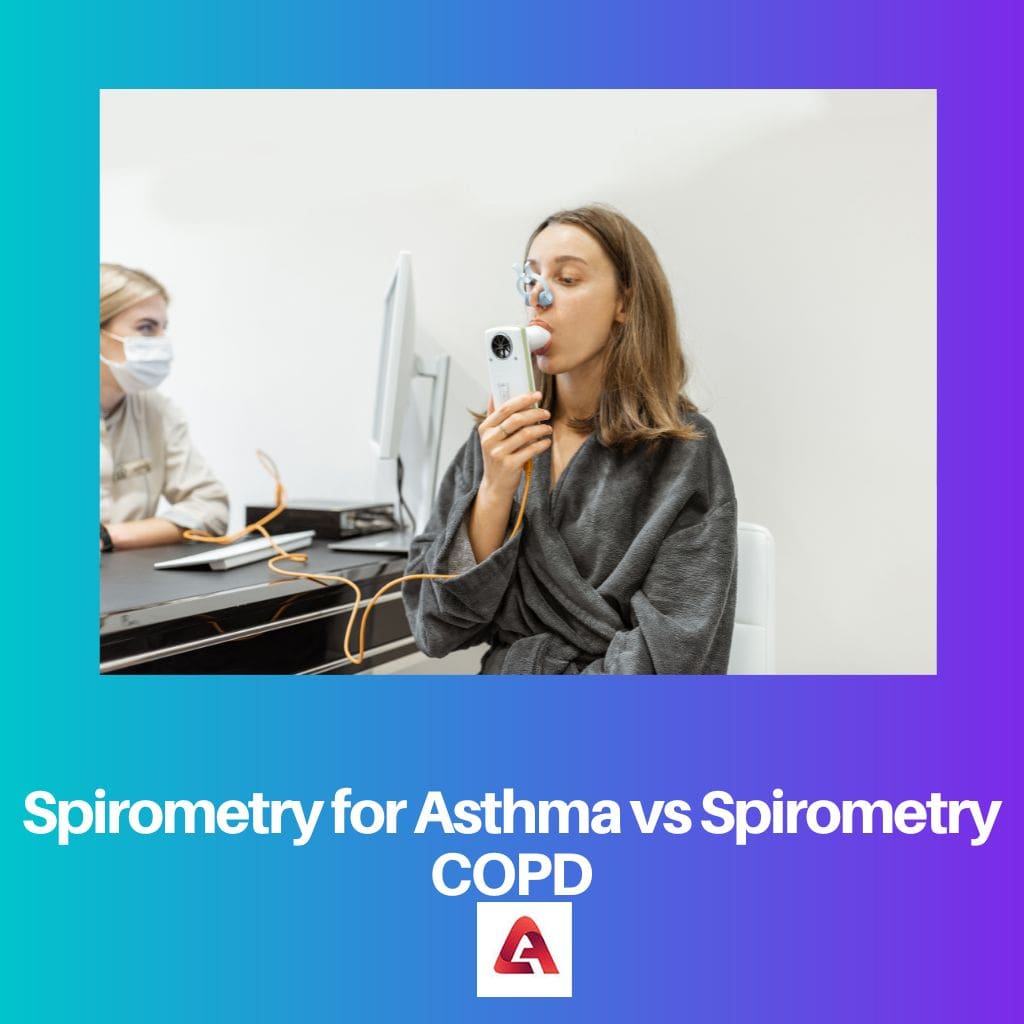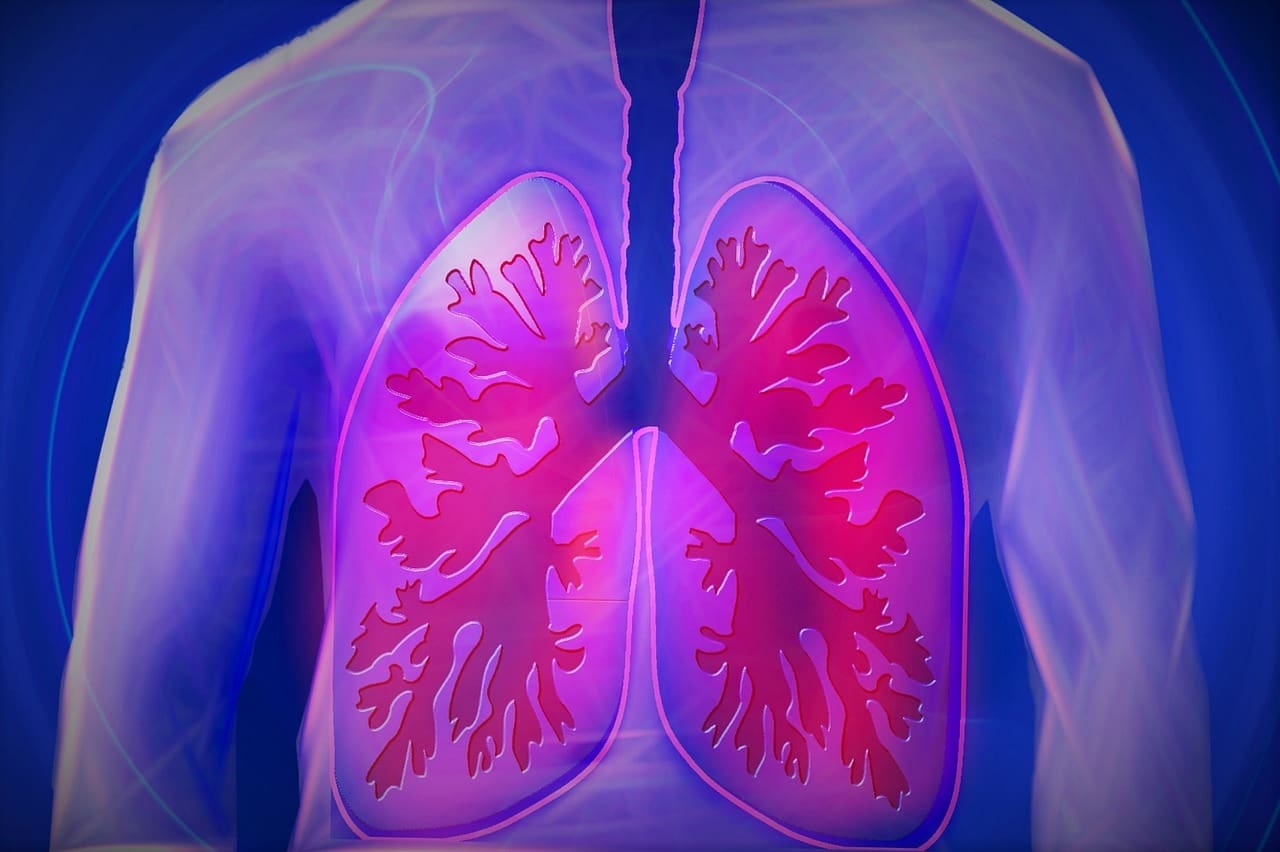Even though asthma and COPD are distinct disease entities, patients frequently exhibit symptoms of both, making it difficult for primary care providers to make a proper diagnosis. The symptoms of asthma and COPD, which are both common respiratory illnesses, are similar.
But they are both different from one another.
Key Takeaways
- Spirometry for asthma diagnoses and monitors the condition by measuring how quickly a patient exhales air. In contrast, spirometry COPD focuses on exhalation and inhalation rates to detect chronic obstructive pulmonary disease.
- Asthma patients experience reversible airway obstruction, which can improve with medication, whereas COPD patients have irreversible airway obstruction that worsens over time.
- Asthma spirometry results show reduced forced expiratory volume in one second (FEV1) and a normal or increased ratio of FEV1 to forced vital capacity (FVC). In contrast, COPD spirometry results indicate reduced FEV1 and a reduced FEV1/FVC ratio.

Spirometry for Asthma vs Spirometry COPD
Spirometry is a pulmonary function test used to diagnose and monitor respiratory conditions such as asthma and COPD. These measurements can help to determine the severity of asthma and monitor the effectiveness of treatment. Spirometry can be used to diagnose COPD, monitor progression, and assess the effectiveness of treatment.
Spirometry for asthma is the process of using spirometry to determine a person’s asthma status, when this lung function test is done to look for airflow blockage that could be an asthma sign, it is known as spirometry for asthma. It is a test to measure breathing ability to help people that are diagnosed with asthma.
Different from spirometry for asthma, spirometry for COPD is when spirometry is used to check for chronic obstructive pulmonary disease, this is known as spirometry for COPD. Spirometry is a breathing test that can be performed to quantify airflow and help in the diagnosis of COPD (chronic obstructive pulmonary disease).
Comparison Table
| Parameters of Comparison | Spirometry for Asthma | Spirometry COPD |
|---|---|---|
| Definition | Is done to test if a person has asthma | Is done to test if a person has COPD |
| FVC | May or may not be reduced | Always reduced |
| FEV1/FVC | The values are less than 70% in an attack of asthma | Less than 70% and decreases in time |
| FEV1 | Increases by 12% after treatment with a bronchodilator | Does not increase by 12% after using a bronchodilator |
| Serial Spirometry | The results may vary or remain similar over time | There is a notable deterioration in values over time |
What is Spirometry for Asthma?
When you have asthma, the muscles surrounding your airways tighten, and the lining of your lungs’ airways thickens. The airways then become congested.
You have a hard time getting air out of your lungs when you breathe. You might consequently cough, wheeze, feel out of breath, or experience pressure in your chest. The symptoms could get worse from exercise or the cold.
Spirometry for asthma involves instructing the patient to breathe in and out so that their lung capacity and breathing ability may be measured and compared to industry-standard reference values.
The presence of asthma can be determined with a spirometry test. Additionally, it assists your doctor in deciding on your course of therapy.
A spirometry test can also determine the efficacy of your medication. Your medication works if subsequent spirometry tests reveal that your asthma is controlled. Depending on the results, your doctor may need to modify your medication or give you more medication to get your asthma under control.
Spirometry examinations cost less than $100. It may be more expensive to skip the test. If you don’t get the test and have asthma, going to the ER for an asthma attack might cost you thousands of dollars.

What is Spirometry COPD?
Airflow is restricted by the illness known as chronic obstructive pulmonary disease COPD. A spirometry test reveals how well a person’s lungs are working and aids in the diagnosis and grading of COPD severity.
Whether a person has symptoms or not, doctors can use it to diagnose COPD in those exposed to risk factors, such as tobacco smoke, confirm an airway obstruction, assist in setting treatment objectives, track therapy response, and forecast outcomes and long-term survival.
Spirometry for COPD is performed using the same technique as for asthma. The forced air inhalation and forced air exhalation rates are measured for a predetermined period, and the results are then contrasted with average rates.
Spirometry can help with an early diagnosis of COPD because it detects the disease before any symptoms manifest, claims the research report. A doctor can better tailor a patient’s care the sooner they acquire a diagnosis.
When a patient displays respiratory symptoms and a consistent medical history, a doctor may utilize spirometry to help them make the diagnosis of COPD.
Spirometry can also track a person’s COPD progression.
Together with histories of symptoms and exacerbations, this helps doctors make therapeutic recommendations.
Spirometry helps doctors a lot to find the health problems of a client.

Main Differences Between Spirometry for Asthma and Spirometry COPD
- As mentioned, the main difference is that spirometry for asthma is the process of using spirometry to determine a person’s asthma status. Spirometry for COPD refers to spirometry that is performed to determine if a person has COPD.
- On FEV1/ FVC, when an asthma episode occurs, the ratio is less than 70%. In the case of COPD, the ratio is under 70%, and it gets worse over time.
- Talking about FVC in some cases of asthma, the FVC is decreased. When COPD is present, the FVC is always decreased.
- FEV1, if someone has asthma, their FEV1 increases after receiving bronchodilator therapy. If a person has COPD, the FEV1 does not get better after bronchodilator therapy.
- And the last thing to mention is serial spirometry; the spirometry results can occasionally change with asthma. Spirometry findings with COPD deteriorate over time, which means it becomes worse over time it is not the same as spirometry for asthma.
- https://www.indianpediatrics.net/july2003/july-626-632.htm
- https://www.nature.com/articles/npjpcrm201659
